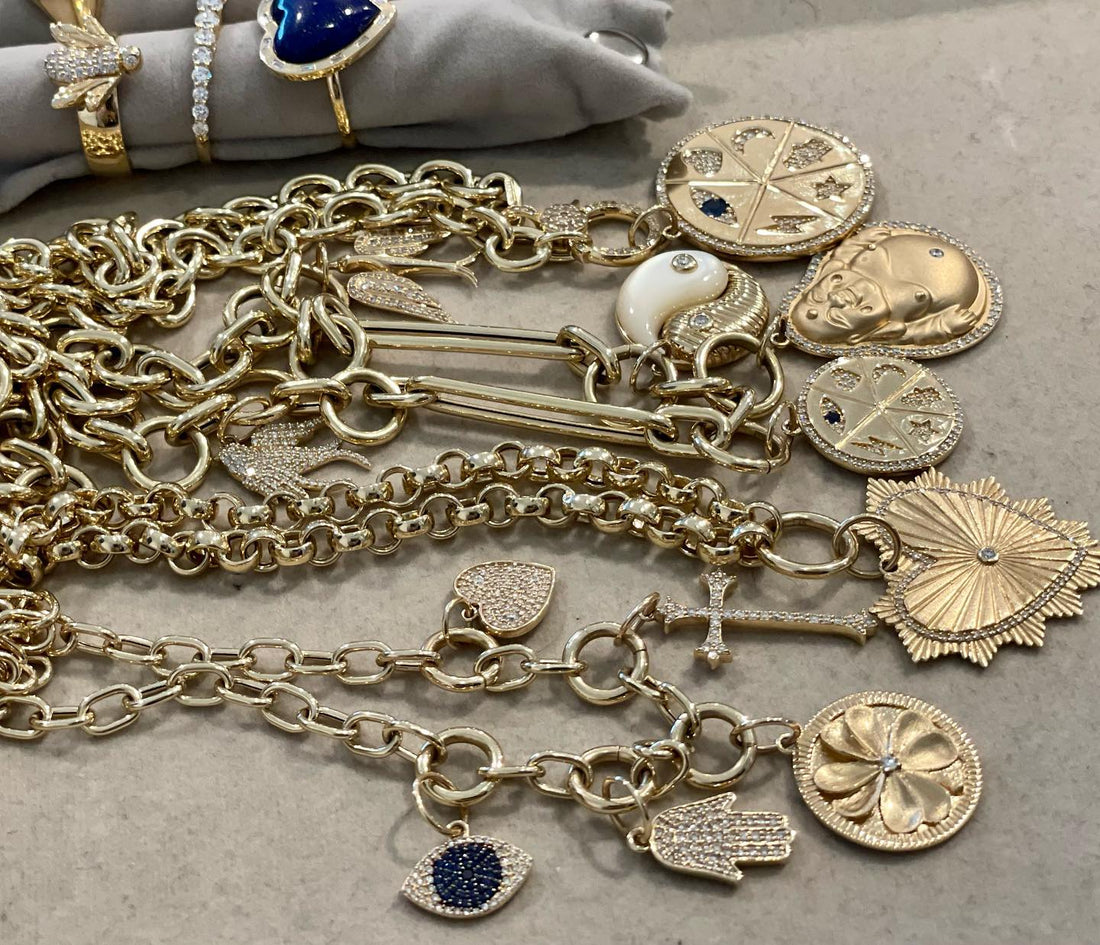In the world of high-end jewelry, the choice of metal is as important as the design itself. From gold to platinum to more “modern” metals, each one carries a unique charm. Here’s a closer look at some of the characteristics, benefits, and uses of the most common metals.
Gold: The Classic
It’s no surprise that gold, with its luster and beauty, has been treasured throughout history. Its malleability, resistance to tarnish, and gorgeous colors make it a favorite.
Gold is measured in karats, with 24k being pure gold—meaning no other metals. However, for durability, gold is often alloyed (or blended) with other metals, creating 18k, 14k, and 10k options. It really comes down to a balance of purity and practicality. For example, 18K gold is created with 75% pure gold and 25% other alloys. And 14K gold is made up of 58.3% pure gold and 41.7% other alloys. Pure gold is very soft and bendable, so most people opt for a blended option.
Gold is available in yellow, white, and rose tones. There really is something for every taste.
Shop 14k gold necklaces, pendants, rings and earrings at JBJ
Silver: So Elegant
Silver's bright, white luster always captures attention. It’s more abundant than gold, and it offers affordability without compromising on style.
Sterling silver is a great choice. It’s an alloy containing 92.5% silver and 7.5% other metals (typically copper) and it’s commonly used in jewelry because it provides a good balance of durability and shine. Silver's softness allows for intricate craftsmanship, making it a favorite for detailed and artistic designs.
When something is “silver plated,” that means that it has a coating of silver plate over a metal such as copper or nickel. You do have to be careful because sometimes the layer is so thin, it can be rubbed off quite easily.
Platinum: Prestigious
Platinum stands out for its rarity and strength. It is dense and durable, so it’s an ideal choice for setting precious stones. It does a great job of securely holding diamonds and gems with minimal wear over time.
Its natural white sheen doesn't fade or tarnish, which is wonderful. In addition, platinum's hypoallergenic properties make it great for sensitive skin.
Shop Silver Necklaces, Bracelets, Earrings and Pendants at JBJ
Palladium: Luminary
Palladium is also a member of the platinum group of metals, and it shares many of platinum's traits but at a lighter weight and often a more affordable price point. Its natural white luster requires no plating and maintains its color without tarnishing.
Titanium: A Modern Marvel
Titanium is known for having remarkable strength, but also being lightweight. Its popularity as a jewelry metal has grown over time—especially for contemporary jewelry designs. It has a distinctive gunmetal gray or black color.
In addition, titanium has hypoallergenic properties that make it ideal for everyday wear. It’s also resistant to corrosion, so it’s a durable choice for rings and bracelets.
Tungsten: The Resilient Reflect
Tungsten is known for its incredible hardness and high melting point, making it the most scratch-resistant metal available in jewelry. It has a hefty weight and a sleek, polished finish. It looks and feels like a premium metal. It’s often found in a range of colors, including classic gray, white, and even black.
Shop Mixed Metal Magic ![]()
![]()
![]() at JBJ
at JBJ
Every metal has its distinctive qualities, and it’s all part of the artistry and science that go into crafting the perfect piece. Whatever metal (or metals) you’re drawn to, browse the JBJ collection of fine jewelry to discover your next favorite accessory. Or visit the studio in Walnut Creek, California!




